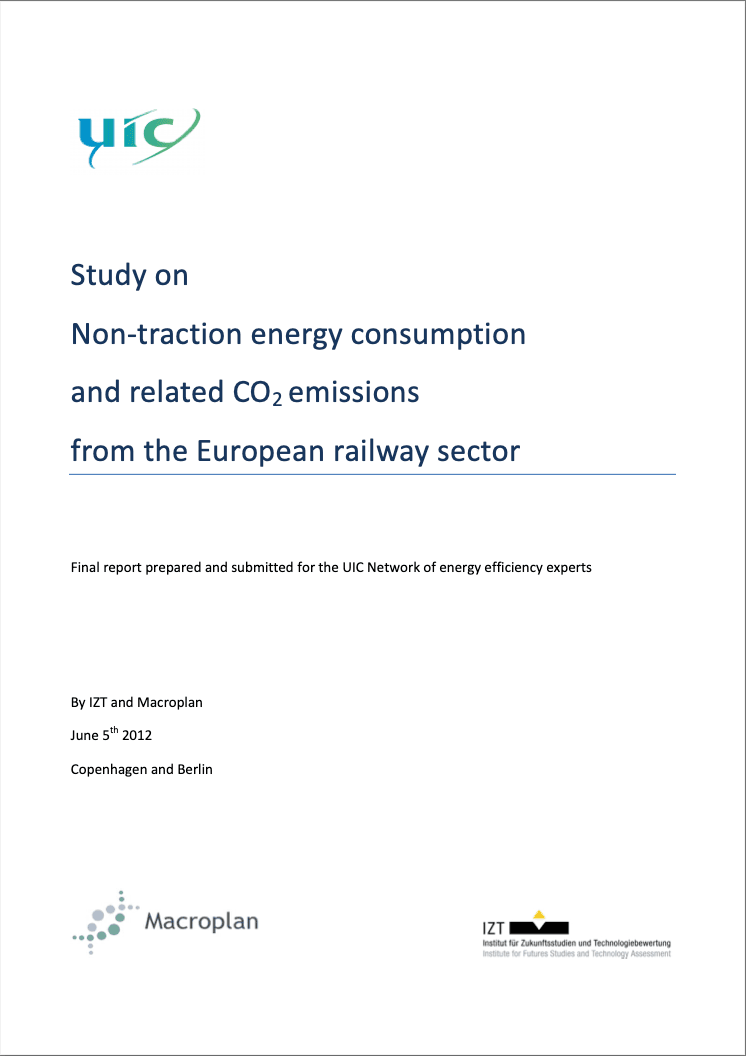Study on Non-traction energy consumption and related CO2 emissions from the European railway sector - Final Report
Abstract
This report contains the main results of the non-traction energy consumption study prepared for the UIC and its network of energy efficiency experts. Overall energy consumption for railways is typically split into traction (around 85%) and non-traction (around 15%) energy consumption. Non-traction energy consumption for railways is divided into five main areas of activity: 1. Commercial activities: Stations and concessions 2. Maintenance activities: Workshops, depots and service buildings 3. Heating of switches 4. Technical railway operation: Lighting of infrastructure, signalling, telecom, traffic control and data centres 5. Administration and offices (outside scope of study) With respect to railway non-traction energy efficiency two EU Directives are relevant at European level: the Energy Efficiency Directive (Proposal for a Directive on energy efficiency COM(2011)370) and the Directive on Energy Performance of Buildings (Directive 2010/31/EU). It is the assessment so far that incumbent railways are seen as public bodies and that railway facilities in general such as stations and offices will be covered by these provisions whereas workshops and depots will not. When railways are building new or making major renovations, EU energy requirements will be in force. Similarly railways are likely to be covered by provisions for energy audits and improvement targets for existing buildings. As part of this study an online survey and several interviews were performed analysing the current status and activities for non-traction energy efficiency at European UIC members. There is a broad spectrum of energy efficiency activities in European railway companies concerning non-traction energy efficiency - ranging from new lighting systems, management of heating, cooling and ventilation over intelligent control of energy efficient equipment, energy requirements for contractors to energetic overhaul of buildings.
